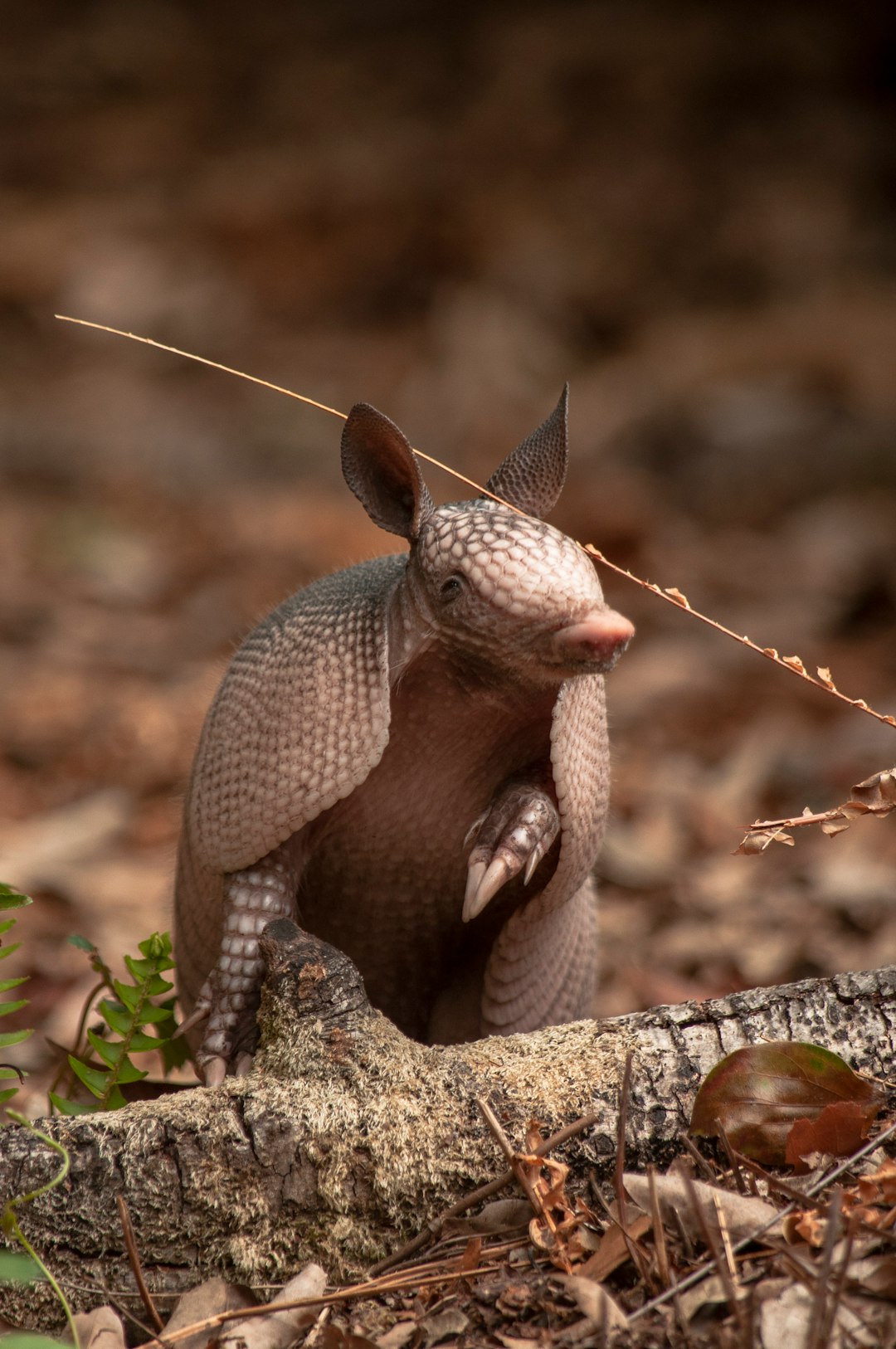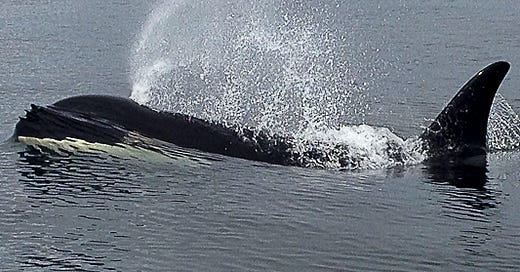I want to get right into the world with the animals and all the lives we’re living with them and around them and the way they live with us soooo, briefly, hi! I love having you here!
If you’re a regular reader, why don’t you try subscribing?
And if you’re a subscriber, please feel free to share WanderFinder with friends.
Thanks!

I have about 7,537 partly-written or semi-planned longer posts, but before I get to all that I thought I’d you needed to know first that armadillos are on the move, and second that we’re under attack from orcas.
Thanks to Jennifer M., friend and friend of the newsletter, for letting me know that nine-banded armadillos are making their way north.
(From Armadillo-Online.org, adapted from Taulman and Robbins, 1996.)
Once blocked by snowy mountains and freezing winters, these days climate change and warmer winters have opened a corridor to armadillo paradise and, as this viral TikTok video points out, lots of new territory to dig into.
Scientists have been watching this phenomenon since the 1990’s, predicting their arrival in the Target parking lots of McLean, Virginia with, as it turns out, pinpoint accuracy.
(From How armadillos gather foliage for their nests.)
Honestly, I would be down with this development (I mean, look at that lil’ backwards jumping, could she be cuter?), but apparently armadillos carry rabies so you’re supposed to report any sightings to your local department of wildlife resources if you see one outside of Texas or the southwest.
White Gladys is taking her revenge.
Y’all I want the movie and I want it now.
White Gladys is a traumatized orca, or killer whale, who is apparently teaching other orcas to attack boats. Scientists theorize that maybe he orcas think it’s fun, maybe they’re just playing with us.
Honey, they ain’t playing.
According to LiveScience:
Reports of aggressive encounters with orcas off the Iberian coast began in May 2020 and are becoming more frequent, according to a study published June 2022 in the journal Marine Mammal Science. Assaults seem to be mainly directed at sailing boats and follow a clear pattern, with orcas approaching from the stern to strike the rudder, then losing interest once they have successfully stopped the boat.
Older orcas appear to be teaching younger orcas this behavior:
Three orcas (Orcinus orca), also known as killer whales, struck the yacht on the night of May 4 in the Strait of Gibraltar, off the coast of Spain, and pierced the rudder. "There were two smaller and one larger orca," skipper Werner Schaufelberger told the German publication Yacht. "The little ones shook the rudder at the back while the big one repeatedly backed up and rammed the ship with full force from the side."
Still, so far, the behavior is relatively rare. “We estimate that killer whales only touch one ship out of every hundred that sail through a location, said biologist Alfredo López Fernandez.
I am a little reminded of the California grey whales off the coast of Mexico and California. In the 1800’s whalers had gotten wind of their breeding grounds in easy-to-hunt contained lagoons and were harpooning them by the thousand, nearly to extinction.
The waters of Laguna San Ignacio once ran red with whale blood each winter and spring, orphaned calves circling whalers’ vessels for days afterward before dying themselves of starvation. — Charles Siebert, “Watching Whales Watching Us,” The New York Times, July 8, 2009.
The whales were fighting back, attacking ships whenever and however they could — finally, sailors would bang on the bottoms of the boats whenever they sailed those waters in the hopes of keeping the whales away.
Then, in 1946, protections were put in place, “and these gentle giants have made a remarkable recovery—their numbers have climbed to about 26,000 which is thought to be close to pre-whaling accounts. It’s the only baleen whale to have ever successfully recovered from commercial whaling.”
As the whale population returned, the paths of humans and whales continued to cross. But this time, the whales — and maybe one whale in particular — reached out with an invitation to start a new kind of relationship.
The story is by now legend in the small fishing villages of Baja and beyond: how on a February morning in 1972, Francisco Mayoral — who is known as Pachico and happens to be the father of Ranulfo, the guide on my trip with Frohoff — was out in his panga with his partner, Santo Luis Perez, fishing for sea bass when a female gray whale approached their boat. Pachico tried to maneuver away. The whale, however, kept rising up beside them. At one point, she positioned herself directly under the panga. Pachico, Ranulfo told me one night over dinner at our beachside base camp, had no choice but to hold his place and wait for what would come next. “All he knew,” Ranulfo recalled of his father, “was that this animal was the boss.”
Human-whale relations at that time in Laguna San Ignacio were testy at best. Stories circulated about female grays smashing boats and overturning kayaks, and local fishermen and visitors alike were still making a point of steering clear of the devil fish, ever mindful of its fearsome reputation and of the turbulent history of human-whale interactions in San Ignacio and the other birthing lagoons of Baja — Bahía Magdalena to the south, Guerrero Negro and Ojo de Liebre to the north. …
Of course, as the mother gray kept circling his boat on that February morning in 1972, the question of whether the grays of Baja had somehow heard the news of our gradual transition from murdering whales to marveling at them was very much on the mind of Pachico Mayoral. “At one point she went directly under and lifted the boat out of the water,” Ranulfo, the son, told me. Pachico and his partner were poised there helplessly, like Sinbad and countless other travelers along the “whale road,” as early Icelanders once referred to the sea.
And then their boat soon settled again, and the mother gray came back around once more, her head popping up out of the water now directly beside Pachico. She remained there for so long, just eyeing him, that Pachico finally reached across and touched her with a finger. And then with his whole hand, the whale holding still there before him, as if basking in the feel of a grasp without malice. “Before then, everyone went out of our way to avoid the whales,” Ranulfo told me. “And then all of that suddenly changed.” — Charles Siebert, “Watching Whales Watching Us,” The New York Times, July 8, 2009.
Today, you can visit Baja and meet the whales — the mothers bring their calves to greet you, and they open their mouths, even, for tongue massages.
I feel like I know exactly what it means to be attacked by traumatized orcas. That does not feel mysterious to me.
I feel like I know less about what it means to be forgiven by the California grey whales, to be shown their calves and asked for connection. It feels terrifying and huge in its hopefulness.
What would it mean to try to broker such an arrangement with the orcas? What olive branch might we offer to White Gladys? Perhaps we should create more peaceful, quiet waters so they can better hear each other with those beautiful, highly developed songs of thiers? Perhaps we should start leaving more fish in the sea for the orcas and other marine wildlife?
I don’t know what it might take to get White Gladys and her family feeling a bit better about us. Whatever it takes, I think they’ve made it clear they’re serious. We should be too.
Thanks to Michèle, friend and friend of this newsletter, for pointing out this Washington Post article on the many benefits of birds and birdsong.
Thanks to my new foster kitten Butterscotch Balvenie for being the absolute cutest, and to Anne and my Mom (friends and friends of this newsletter) for helping to name him.
And thanks also to Tom Pluck (friend and friend of this newsletter) for driving six (6! SIX!) hours round trip to do this with me last weekend, which I plan on writing up soon.
Looking forward to chatting with you more, and in the meantime, have a wanderful time out there!








This is wonderful. I welcome armadillos to New Jersey with open arms. I read about the orcas a while back and think it's hilarious. If they want to sink yachts, they can go after private jets next. Congrats on the kitty, I love the name. And the kayaking trip was so much fun. Thank you for the opportunity. I was supposed to go kayaking in the pines today but it rained and I was able to cancel, so I went on a Subaru caravan through the Pine Barrens instead.